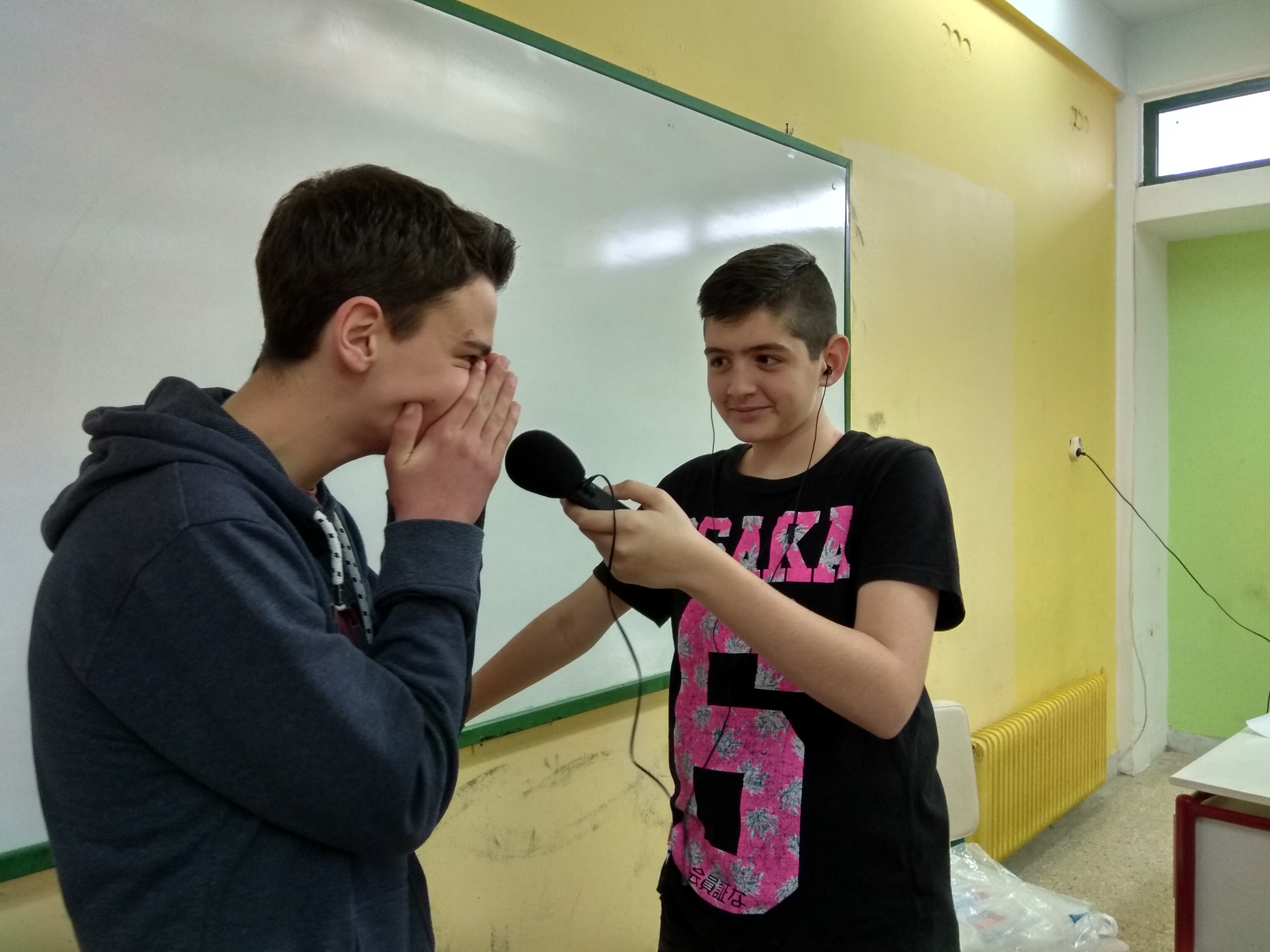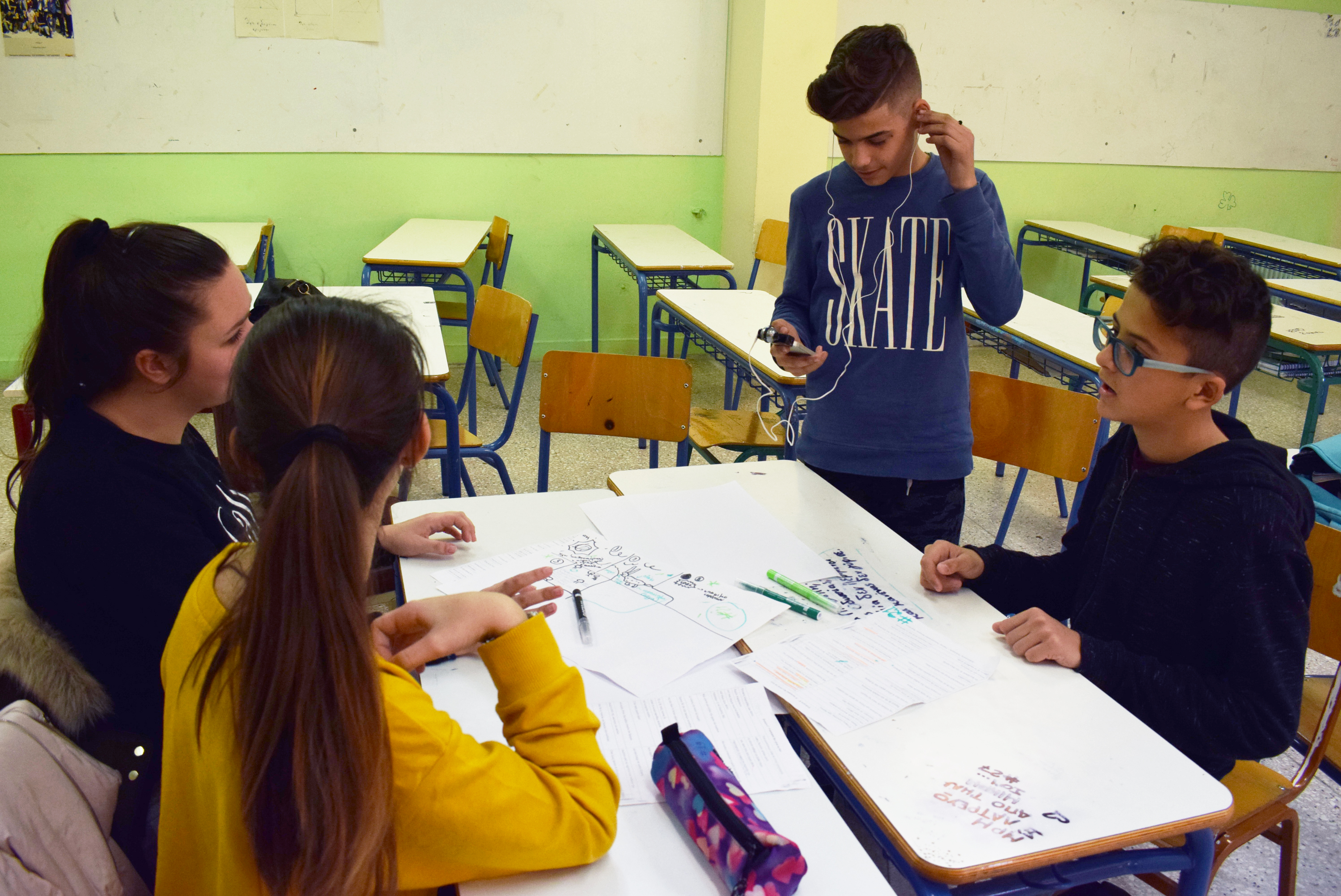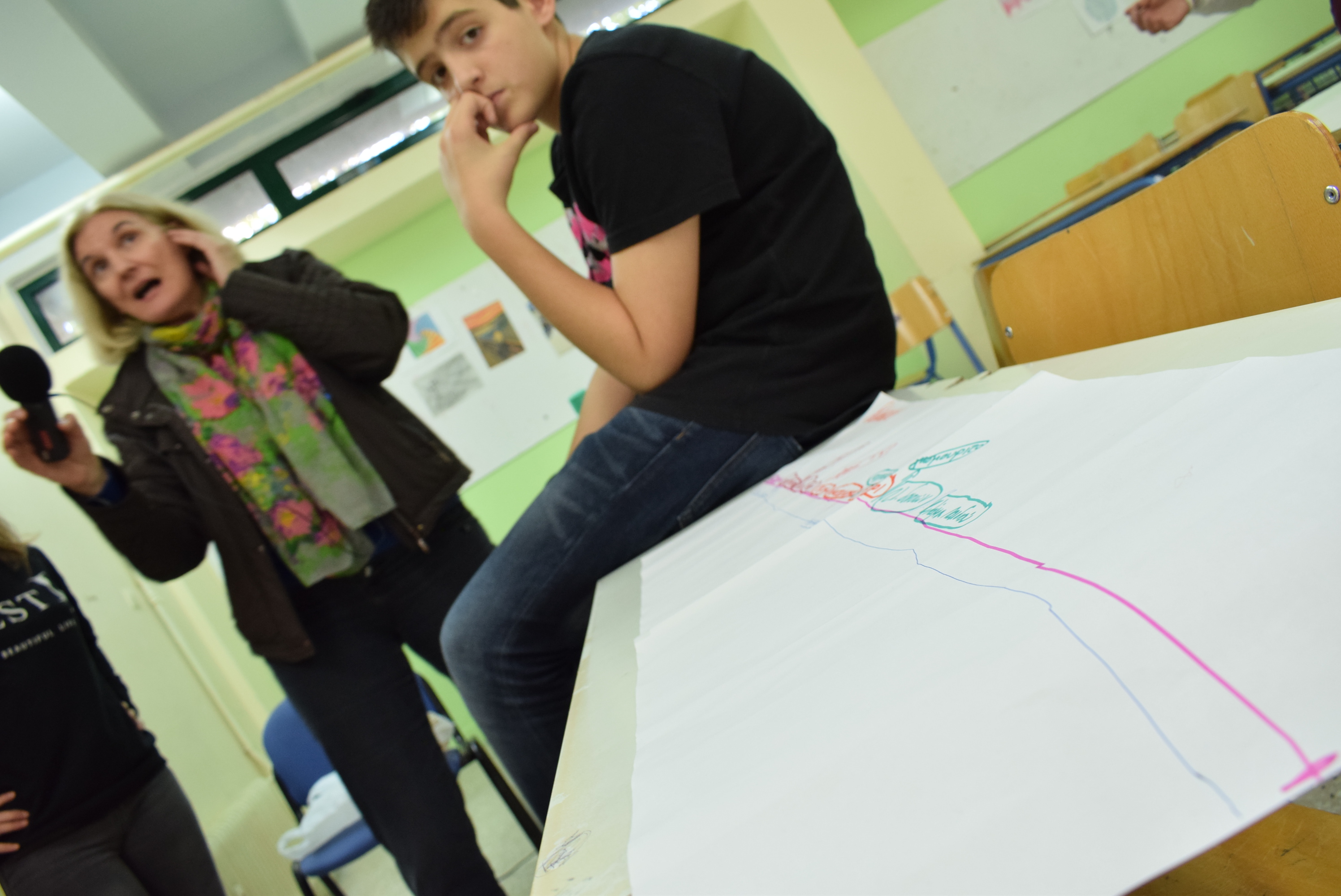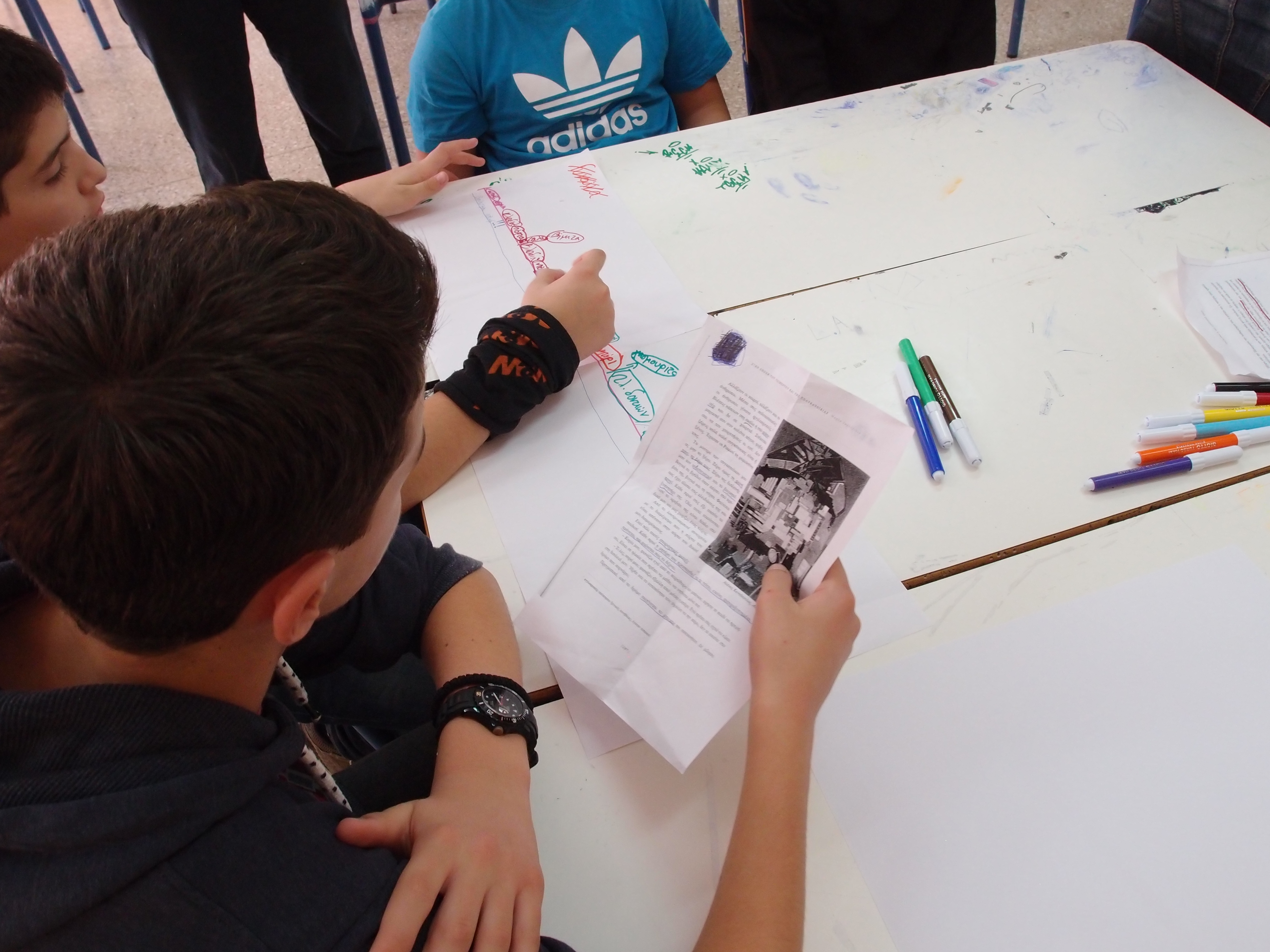Organising institution: Karpos
Country: Greece
Age: 12-17
Key question: Can we tell a story through sounds exclusively?
Objectives:
- Research a theme;
- Observe, analyse;
- Structure content for a time based medium,
- Recognise and develop a narrative
- Experiment
- Develop communication and organizational skills within the group.
Discover qualities of sound:
- As expressive medium: duration, rhythm, depth, intensity, synchronicity.
- As narrative medium: sounds are thought provoking elements. They trigger our imagination and retrieve information from our memories and stereotypical knowledge.
Use digital devices for creative purposes (e.g. research and sound recording).
Time: 2 hours for each part + visit time if the narrative is based on an existing cultural/historical space
Software and apps to be used:
- https://www.freesound.org
- http://soundbible.com
- Audacity (Audacity® is free, open source, cross-platform audio software for multi-track recording and editing).
Brief presentation: Groups brainstorm about the sound profile of a location or a short narrative, make lists and draw α self made music sheet, organizing sounds on a timeline, their levels and sequence. Roles are shared within the team as in an orchestra. They rehearse and record their performance for the peer audience. Similarly, they do this with digital devices by searching in sound libraries to create the desired storyline. This performance uses the devices’ speakers as music instruments. Additionally, they can visit the actual space and record and edit a documentary soundscape afterwards.
Topics covered:
- Sound qualities, man made sounds, creating visual impressions through sound.
- Categorisation of stereotypical meanings, storytelling, comparison of visual to aural information.
- Synthesis, synchronisation, choreography, team work.
Civic engagement: Students will need to observe and produce an interpretation of the site based on their experiences or a widespread stereotype of how humans use and relate to this public space. It will focus their critical thinking on how public or other spaces/situations are represented in collective memory and how this can be recreated in different versions. During the actual real recording they will need to encounter locals and come to contact with the structure of the space.
Materials needed: Microphones, speakers, A3 or bigger paper, pencils, colored markers, mobile devices with Internet access. Alternatively, still photo camera used only for sound recording. Card reader, one computer. Mikes and cameras should be charged and usb cables available.
Main inspirations taken from personal research:
- film making,
- documentary,
- visual anthropology,
- anthropology,
- cultural heritage representation,
- mapping of meanings,
- storyboarding,
- music conduction,
- physics of sound.
Mass media and social media connections: Sound is a crucial element of all media productions. Either recorded live/ on camera or added afterwards as an effect or additional layer of narrative/ atmosphere (e.g. films, games). Often takes the role of the backbone of a media work. E.g music clip, documentary based on interviews/ live sound.
How do you plan to give voice to students to present or show their personal skills and knowledge? Double interview about their experience, evaluation and comment on how the activity flowed, its use at school, impression about the results.
How do you collect information as the starting point of a Digital Atelier? There was no coherent methodology in that respect and time to follow this.
Introducing students to the key question – the research begins: Could we imagine how the “x” space/ story would be? Could we make something and have other people imagine what we thought of with their eyes closed?
- Or could we imagine e.g. “x” space where people are active in…or enjoy… or how the battle field/ science lab would be?
Experimental phase
- Action that unfolds the practical activity to clarify the question: Explanation of open market group exercise. Taking the role of buyer and sellers. Rehearsal. What is the microphone role?
- Active work of the students: Developing versions/ distance and position.
- Presentation of findings and results (visualisation of information): Quick design of sound script of what happened.
Project/design phase – part 1
- Second action that unfolds the practical activity: Make the sound profile of a specific space: What do we hear on the first level and what is on the background? What sounds are characteristic of this site? Who makes these sounds and why? How do they develop through time? What is the main feeling we have? Could these sounds form some kind of storytelling?
- Active work of the students: draw on a big paper and symbolise sounds. Each participant can have hls colour/ sound. Rehearsal.
- Presentation of findings and results (visualization of information): Present Soundscape and drawings one next to other to the whole group.
Project/design phase – part 2
- Third action that unfolds the practical activity: How can we use sounds produced by other people for our own soundscape? (+mobile devices and internet for a digital version?)* Third action alternatively: edit self made or found sounds; field recording if the chosen space exists near the school.
- Active work of the students: Search with mobile devices on sound libraries and make similar environment with ready made sounds.
- Presentation of findings and results (visualization of information): Rehearse and play again as in orchestra with devices as music instruments/ speakers. Is there a difference when ready made sounds get involved?
- Analysis of results: Restrictions and liberties from our own hand/object made sounds to digital prescribed variety.
Approach to a new software or a new app: Sound libraries: different style and content. How to choose? (Audacity as a sound editing software. What is editing sound?)
Links between the Digital Atelier and real life of the students: Field work in the documentary version. Technology of sound (producing and using). Understanding sound in all videos and games.

How do you plan to evaluate knowledge and skills? See above the other evaluation question/ box.
*Notes on the mobile digital version:
- The available sounds may affect the choice of theme following a quick search.
- It may be easier if the soundscape is repetitive or more abstract (not so strictly narrative driven).
- Propose research in pairs in sound libraries with shared earphones or individually.
- Find the appropriate sounds.
- Either download them or be prepared to play online only if a good network is available.


